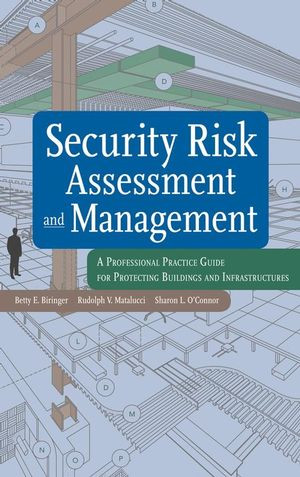

Most ebook files are in PDF format, so you can easily read them using various software such as Foxit Reader or directly on the Google Chrome browser.
Some ebook files are released by publishers in other formats such as .awz, .mobi, .epub, .fb2, etc. You may need to install specific software to read these formats on mobile/PC, such as Calibre.
Please read the tutorial at this link: https://ebookbell.com/faq
We offer FREE conversion to the popular formats you request; however, this may take some time. Therefore, right after payment, please email us, and we will try to provide the service as quickly as possible.
For some exceptional file formats or broken links (if any), please refrain from opening any disputes. Instead, email us first, and we will try to assist within a maximum of 6 hours.
EbookBell Team

5.0
28 reviewsThis guidebook sets forth a systematic, proven set of best practices for security risk assessment and management of buildings and their supporting infrastructures. These practices are all designed to optimize the security of workplace environments for occupants and to protect the interests of owners and other stakeholders. The methods set forth by the authors stem from their research at Sandia National Laboratories and their practical experience working with both government and private facilities.
Following the authors' step-by-step methodology for performing a complete risk assessment, you learn to:
The authors further provide you with the analytical tools needed to determine whether to accept a calculated estimate of risk or to reduce the estimated risk to a level that meets your particular security needs. You then learn to implement a risk-reduction program through proven methods to upgrade security to protect against a malicious act and/or mitigate the consequences of the act.
This comprehensive risk assessment and management approach has been used by various organizations, including the U.S. Bureau of Reclamation, the U.S. Army Corps of Engineers, the Bonneville Power Administration, and numerous private corporations, to assess and manage security risk at their national infrastructure facilities. With its plain-English presentation coupled with step-by-step procedures, flowcharts, worksheets, and checklists, you can easily implement the same proven approach and methods for your organization or clients. Additional forms and resources are available online at www.wiley.com/go/securityrisk.Content:
Chapter 1 Security Risk Assessment and Management Process (pages 1–22):
Chapter 2 Screening Analysis (pages 23–30):
Chapter 3 Facility Characterization (pages 31–47):
Chapter 4 Threat Analysis (pages 49–73):
Chapter 5 Consequence Analysis (pages 75–81):
Chapter 6 Asset Prioritization (pages 83–86):
Chapter 7 System Effectiveness (pages 87–120):
Chapter 8 Estimating Security Risk (pages 121–125):
Chapter 9 Risk Reduction Strategies (pages 127–152):
Chapter 10 Evaluating Impacts (pages 153–163):
Chapter 11 Risk Management Decisions (pages 165–174):
Chapter 12 Summary (pages 175–186):
Chapter 13 Demonstration of the Security Risk Assessment and Management Process (pages 187–296):